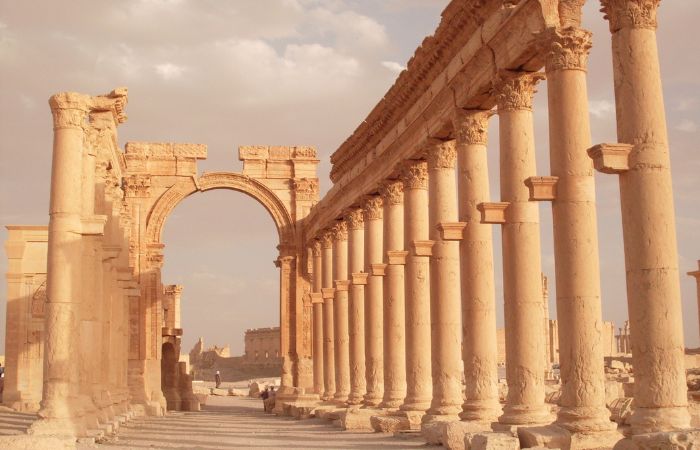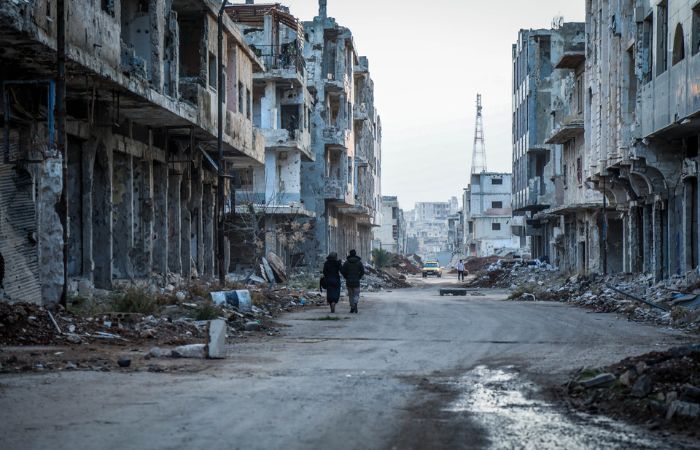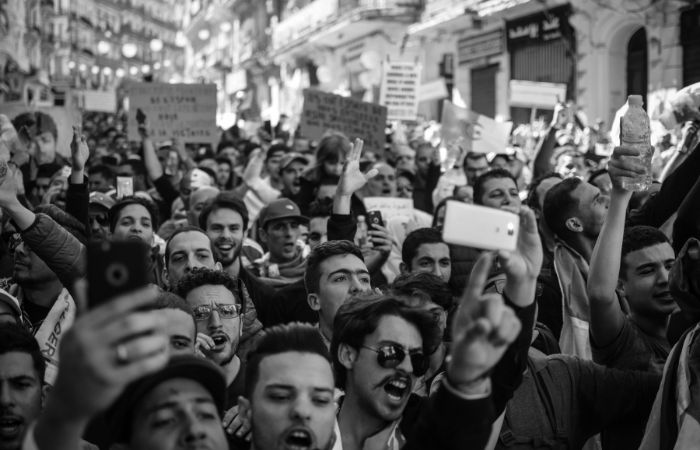Top 23 Things Syria is Known For & Famous For
Syria is possibly one of the most underrated countries in the world. Famed for its historical prowess and cultural charms, Syria is a Middle Eastern haven of beautiful scenery influenced by many generations of different cultures and religions. Built by empires from before the beginning of historical records, Syria is a country you don’t want to miss.
Syria is known as one of the world’s oldest known civilizations. Famous for its incredible topographical scenery and devastating recent events, Syria’s old-world wonders can still be seen today. From Damascus to Homs, ancient cities and cultural phenomena still showcase the intricacies of the past.
The rest of this article will delve into the complexities of Syria’s past and present, looking back into the wonders of ancient empires to the catastrophic wars that rage in the country today.
Disclaimer: This post may contain affiliate links. We may earn a small commission for purchases made through links in this post, at no extra cost to you.

One of the Oldest Civilizations
Syria is an archeological haven, holding some of the most revered historical finds in the world. One of these preserved civilizations can be found in Ebla, a city known for its ageless past beginning in 3000 BCE.
Due to its prominent location, Syria has been tossed between empires since its inception. This has made for some of the most incredible archaeological finds, such as Tel al-Qaramel. This hamlet sits over the River Queiq and finds its origins around 11000 BCE.
Syria has been referenced by Persian kings and Biblical texts alike, making it by far the most interesting historical country in the East.

Civil War
In another disastrous turn of events in Syria’s already-war-torn history, the most recent civil war began in March 2011. In what was considered some of the most brutal civilian repressions of all time, government forces fought back against pro-democratic movements in the second uprisings of the Arab Spring.
The Syrian civil war began almost innocently when a group of wandering teenagers pasted anti-government slogans across the walls of their town. These youths then disappeared at the hands of government forces, and when they finally returned to their village, they came to be buried. These simple acts of rebellion caused an eruption of anger, beginning a war that still, to this day, rages on.

Arab Spring
Prior to March 2011, a series of uprisings across the Middle East erupted from Egypt and Tunisia and eventually rose to Syria. The Arab Spring fractured the already-delicate political stage in the region by protesting authoritarianism and the end of government corruption.
By far, the most disturbing of these uprisings came out of Syria when those who were inspired by the protests decided to challenge their own government.

ISIS
Sadly, political contention and civilian anger leads to the creation of extremist groups. The Islamic State of Iraq and Syria (ISIS) is well-known for its destructive behaviors and systematic murders in the areas they controlled during the first onsets of civil war.
ISIS’s most recent attack occurred in January of 2022, a reminder of its brazen and brutal scheme to create an Islamic State that stretches from the banks of the Tigris in Iraq down to the borders of Syria. Although the organization has largely been defeated, there are still concerns about ISIS today and whether or not they will regain power in the region.
At its most successful, the group gained control of around one-third of Syria and just under 50% of Iraqi soil.

History
Thrown around different kingdoms and empires, Syria has been under the control of dozens of kings throughout the ages. From the Assyrians all the way to the Fatimids and beyond to the Ottomans and the colonial French, Syria’s boundaries have been cut and destroyed more times than virtually any other country.
Ancient lands that can still be seen in Syria today remain integral to historians’ search for proof of the past. Hundreds of ancient sites, monuments, and mausoleums peppered throughout the country are still witness to pilgrimages and historians’ journeys today.

Desert
The desert of Syria stretches out across Jordan, the Gulf States, and Iraq. This desert is one of the driest places on earth, with hardly any rainfall.
This desert was once the center of a great civilization and is now roamed – as it always has been – by Bedouin shepherds and nomadic tribes that bear witness to their past.

Food
Syrian food is similar to Lebanese, Palestinian, and Jordanian food. A concoction of different traditions from a mixed past, food sharing and ultimate hospitality have become an integral part of daily life in Syria.
Since Aleppo, located in the north of the country, used to be a crossroads of trade between Ottoman empires and Chinese emperors, the food is spicy, sweet, and sour all at once.
Historical traditions often dominate food in the region, so many ingredients in traditional Syrian food are repeated in multiple dishes. The use of wheat and beans in stews such as Fasoulia is known throughout the Levant. The seasons will often dictate which local ingredients will be used since agriculture makes up one of the largest sectors of Syrian society and commerce.

Culture
Syrian culture is known to be fairly conservative, with modesty being a favored custom across the country. Since most people are Muslim, many Syrian customs bear their origins in ancient Islamic traditions grounded in specific Muslim values.
Tradition is an essential component of Syrian culture, so gender roles still play a significant role in family life. Many families still play by the rules of old traditions, such as living in the same house as their parents or in-laws. This is a predominantly Islamic ideal, but it is a custom often practiced by Druze and Christian families as well.

Bashar Hafez al-Assad
Son of the infamous Hafiz al-Assad, an authoritarian ruler with a heavy hand, Bashar was initially a celebrated figure in the first stages of his rule in Syria from 2000.
However, where democratic change and westernization were promised, authoritarian rule still prevailed in the country. Since the beginning of the civil war, the Syrian president has lost control of around 40% of the territory.

Golan Heights
Widely contested throughout the ages, the Golan Heights have been (and are still) the source of several regional conflicts. Now under the occupation of Israel – for the most part – this historical plateau is home to around 20,000 Syrian nationals, many of whom are affiliated with Druze groups.

Hama Massacre
The notorious Hama Massacre, carried out by government forces in retaliation to extremist challenges in the region, occurred in February 1982.
During this short-lived period, thousands of lives were lost. Government forces used the Hama Massacre to intimidate and overthrow the Muslim Brotherhood. This organization runs deep in the vein of Egyptian, Syrian, and Iraqi territories and was spurred on by the atrocities of the Syrian civil war.

Religion
Although just under 90% of the Syrian population are Muslims, Syria is also home to the following sects:
- Christians
- Alawites
- Ismailis
- Druze
- Jews
Housing such a complex mixture of religious groups with their own unique traditions and customs, Syria continues to surprise outsiders. Living in relative harmony throughout the ages, each sect congregates in their own spaces with deep respect for other religions.
Since Islam is the most widely-practiced religion in the country, the Syrian Constitution is bound by Islamic ideals and upholds the tradition that each president must be Muslim.

Corruption
Corruption in Syria is rife and is one of the reasons why the civil war hit the population so hard. Out of 100, the Corruption Index gave Syria a total of 87 for corruption.
Corruption originates in legal precedents and poor urban planning structures, a phenomenon that Syria is all too familiar with. The Syrian government is largely authoritarian and does not hold democratic elections in the same way the Lebanese government does.

Kurdish
The Kurdish people have been fighting for independence for many years. Syrian Kurds comprise about 10% of the general population and have been victims of multiple atrocities in recent years.
Historically, the Kurds have suffered casualties against the Iraqi and Turkish governments as well as the Syrian forces and have long been a minority group searching for recognition as an independent state.
Kurds, firmly against the current Syrian government, have now taken position in the north-east regions of Syria.

Damascus
A city of lush greenery, dense population, and ancient shrines, the origins of this place reside past the proof of written history. Often termed “sham,” meaning north (or left, depending on the area of the Levant you hear the term), Damascus has been a thriving center of trade and commerce since the third millennium BCE.
The city is also a prime location for trade, as it has been for many centuries. Sitting in perfect line with the old Silk Road (a trade route stretching from China through Iran towards Syria, Damascus was the ideal spot for merchants to sell their wares, exporting and importing goods along the Silk Road.
Damascus is also a UNESCO World Heritage site with over 100 shrines and monuments dedicated to various historical points.

Damascus Steel
While we aren’t sure of the exact origins of Damascus Steel, it is believed to originate from an Islamic metal artisan around 750 AD. Recognized for its beautiful cut and wavy patterns, Damascus steel is said to be prime material for ancient weaponry and everyday use alike.
Damascus steel was introduced to Europe after 1100 and is known for its carbon content.

Shia Pilgrims
Syria is home to some of the region’s most important shrines for Shia pilgrims. At least 50 are well-known to the Shia population, some dating back to the death of the Prophet Muhammad.
One of these famous shrines is the mausoleum of Sayyida Zeinab, the granddaughter of the Prophet Muhammad and revered for her dedication to early Islam. This shrine has an adjacent mosque that worshippers attend year-round.

Hezbollah
Although Hezbollah is not fundamentally a Syrian phenomenon, they have been involved in the Syrian conflict since the beginning. The group is funded primarily by Iran and has a strong political presence in Lebanon, bordering Syria. It has mainly supported Bashar al-Assad and his government while addressing issues of control they deem to be inappropriate – namely, the west.
This alliance has led to an active presence in the Syrian territory, where they are carrying out their own projects primarily to gain power in the region.

Crusader
The age of the Crusades, many centuries ago, was a time of plight for many Muslims in the Middle East. Specific to the Syrian Crusades, Nur al-Din, a caliph associated with the Abbasids, brought peace back to Damascus and the surrounding area from 1116 to 1174.
These campaigns pushed back Crusaders from Syrian lands and maintained primary Islamic allegiances crucial to the area.

Umayyad Mosque
The Umayyad Mosque, finished in 715 AD, is based in Damascus. An incredible throwback to the ancient Syrian regimes who pioneered the first Islamic movements of the region, this beautiful structure was built over a Pagan temple.
The Umayyad Mosque is one of the region’s most visited sites for Shia pilgrims.

Krak des Chevaliers
Also known as Hisn al-Akrad, this dense fortress was renovated and redesigned by Knights Hospitaller many centuries ago. Located deep in the plains of Syria, not far from Homs, it can be seen stretching high up on a silted ledge. The preserved limestone exterior is by far the largest site for miles around.
Krak des Chevaliers is now a UNESCO World Heritage site and is renowned as an example of careful preservation of history.

Aleppo
Aleppo, a city located in the north of the country, has been ruled by several notable groups and empires, including the Mongols, Assyrians, and Mamelukes, among others.
The old Citadel in the heart of this urban metropolis is one of the primary examples of Islamic military power. Aleppo rises above some of the most fertile plains of Syria, making the area most famous for its agricultural exports.

Arabic Language
Arabic, a language spoken throughout the Middle East, is the overarching term for the regional dialects that dominate the area. Each country speaks a slightly different version of Arabic, but formal Arabic (known as FusHa) is the written official language of the Middle East.
Syrian Arabic is similar in many ways to Lebanese, Jordanian, and Palestinian, with softer and more lyrical notes compared to the slightly harsher tones of the Gulf and Egyptian Arabic.

Conclusion
Widely revered for its incredible, complex history and tragic present circumstances, Syria is, and always has been, home to some of the most intricate cultural blends. With ancient history throughout the region still present today, Syria’s devastating and beautiful history is something to behold.

Sources
- Britannica: Aleppo
- UNESCO: Ancient City of Aleppo
- UNESCO: Crac des Chevaliers and Qal’at Salah El-Din
- World History Encyclopedia: Krak des Chevaliers
- Islamic Landmarks: Umayyad Mosque
- Khan Academy: The Great Mosque of Damascus
- Britannica: Nur al-Din
- Fanack: Syria the Crusades
- Carnegie Middle East Center: Power Points Defining Syria Hezbollah Relationship
- Institute for the Study of War: Hezbollah and Syria
- United States Institute of Peace: Part II: Shiite Holy Sites in Syria
- Carnegie Middle East Center: What Does Syria Mean for the Region’s Shia
- The New York Times: The Mystery of Damascus Steel Appears Solved
- ThoughtCo: Damascus Steel Facts and Naming
- UNESCO: Ancient City of Damascus
- Britannica: Damascus
- Arab Center Washington DC: Kurdish Dilemmas in Syria
- The New York Times: Syria’s Kurds Wanted Autonomy. They Got an Endless War.
- WorldData.info: Corruption in Syria
- Arab Center for International Humanitarian Law and Human Rights Education: Religion and the law in Syria
- SBS Cultural Atlas: Syrian Culture – Religion
- Middle East Policy Council: Syria: The Hama Massacre
- Trial International: Syria: Justice for the Hama Massacre
- BBC News: Golan Heights Profile
- Permanent Mission of the Syrian Arab Republic to the United Nations: The Syrian Golan
- Britannica: Golan Heights
- Geopolitical Intelligence Services: Syria’s Assad is an Unlikely Survivor
- Britannica: Bashar al-Assad
- Countries and their Cultures: Syria
- SBS Cultural Atlas: Syrian Culture: Core Concepts
- Metropole: The Magnificent Tastes of Syrian Cuisine
- The Guardian: Remembrance of tastes past: Syria’s disappearing food culture
- Animal Stratosphere: 12 Interesting Facts about the Syrian Desert
- Britannica: Syrian Desert
- One World Nations Online: History of Syria
- Syrian Law Journal: Syria: Brief History
- Wilson Center: Timeline: The Rise, Spread, and Fall of the Islamic State
- Carnegie Endowment for International Peace: The Insurgency of ISIS in Syria
- United States Institute of Peace: Syria Timeline: Since the Uprising Against Assad
- Britannica: Syrian Civil War
- World History Encyclopedia: Syria
- Syrian Arab News Agency: Syria, home to oldest archaeological village and human settlement in the world
- History: The History of Syria